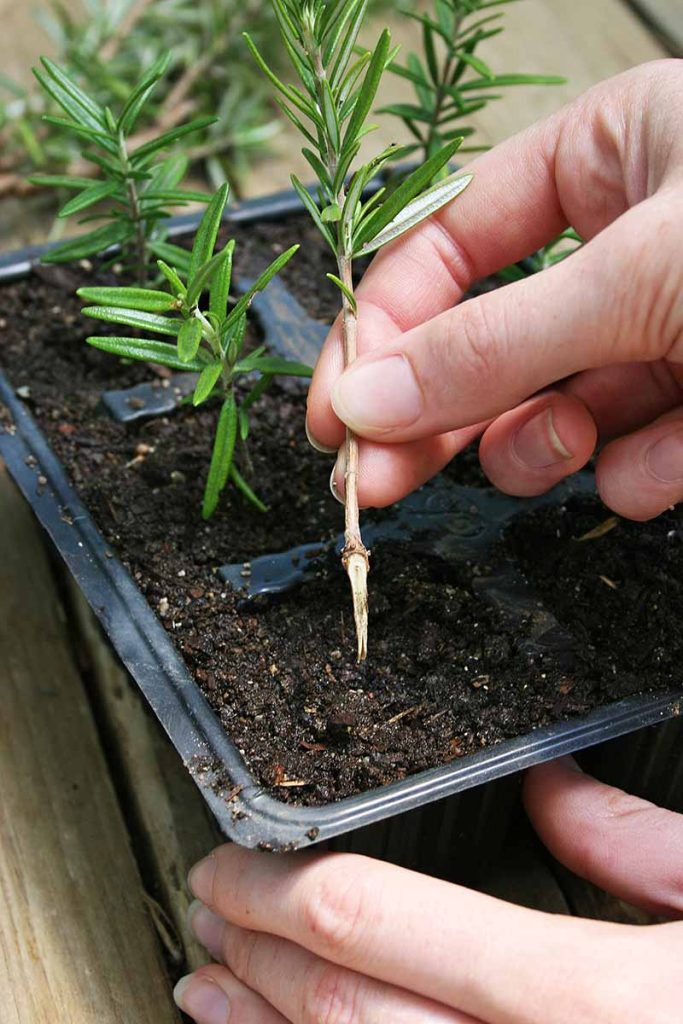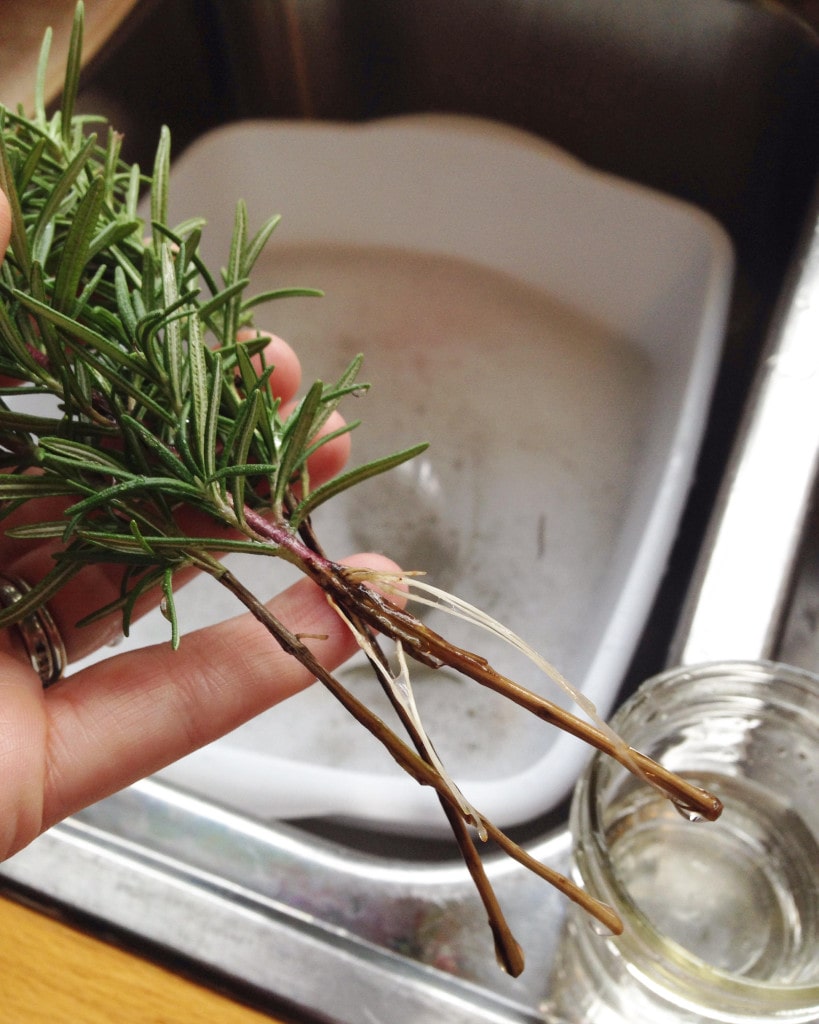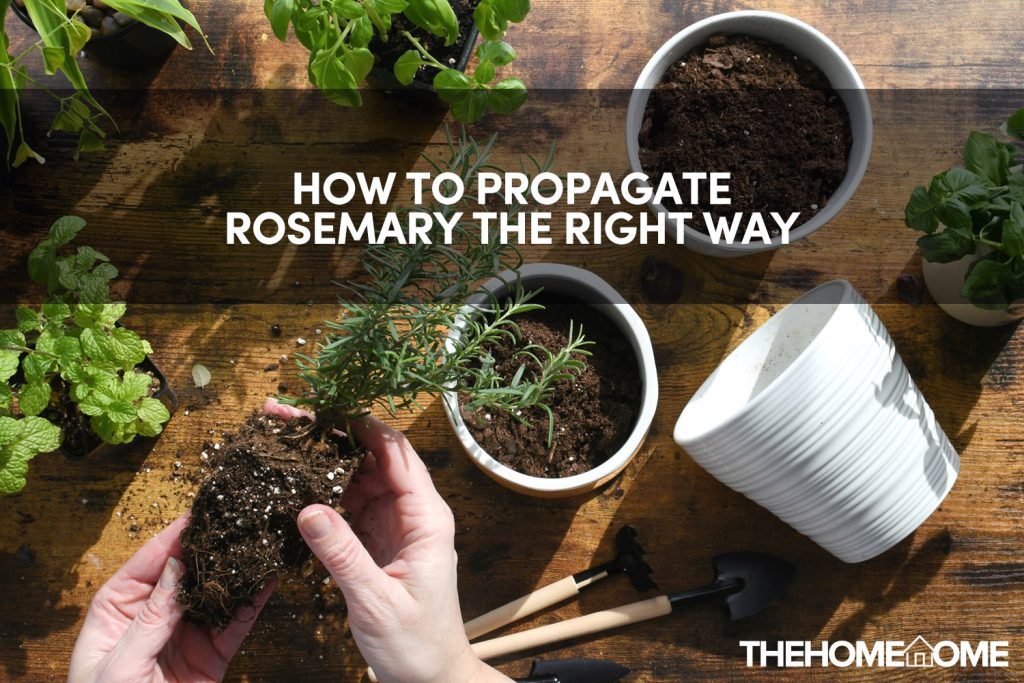Rosemary is not just a popular herb in the kitchen alone, but it makes a wonderful addition to your vegetable or herb garden. There are several varieties of rosemary and most of them will thrive in well-drained loamy and slightly acidic soil.
Knowing how to propagate rosemary the right way will ensure this herb stays healthy and thriving. You can propagate rosemary plants at any time of the year, you just need to know the right way to do it.
Growing rosemary is not as complex as it sounds, you just need to provide them with the right requirements. This fragrant evergreen herb can be quite versatile, it can be used as a perfume, and culinary condiment and can potentially help the immune system or fight any infection.
Rosemary is best planted in spring or autumn, and it won’t require a lot of care like other herbs. There is every reason to have this planted in your garden, but the most popular reason is to have fresh rosemary herbs to use for dishes like soups, salad, and casseroles.
If you already have established rosemary then you can try and propagate dozens of new plants and since rosemary is one of those plants that roots very easily then you shouldn’t have any problem doing this. Growing rosemary from seed can take a very long time, so it’s best to propagate it by cutting, and this article shows how to do that.
Rosemary Herb Basic Information
Rosemary is a hardy plant, and it doesn’t require much to thrive but knowing some basic information about this plant can ensure you know what to expect when planting and caring for it. Since rosemary is such a wonderful herb plant, there always seem to be so many questions about it, hence here is basic information every gardener or beginner should keep in mind.
| Common Name | Rosemary |
| Scientific Name | Salvia Rosmarinus |
| Plant Type | Herb, perennial, shrub |
| Plant Family | Lamiaceae |
| Light | Full sun |
| Soil Type | Sandy, loamy well-drained soil |
| Foliage Color | Blue/green |
| Temperature | Between 55 degrees and 80 degrees |
| Soil ph | Between 6.0 and 7.0 |
| Native | Mediterranean and Asia |
| Toxicity | Non-toxic |
How to Propagate Rosemary The Right Way
The combination of waterlogging and cold can kill your Rosemary plant even though it’s frost-hardy, so you want to make sure you propagate it the right way. The germination rate for rosemary plants propagated from seed is very slow and note that the layering method is pretty much the same as the cutting method. It’s really rare to find rosemary being propagated from seed since this is a long process.
Propagating rosemary from cuttings doesn’t need much experience, and it is quite easy. You should have dozens of rosemary in no time at no cost at all if you have it propagated the right way. So, here is how to propagate rosemary from cuttings.

Materials Needed to Propagate Rosemary
- Rosemary cuttings
- Terracotta pots or a growing area with some potting soil
- Rooting powder (optional)
- Water
- Plastic ziplock bag
- Peat free multipurpose potting mix
Step 1: Source For Rosemary Cuttings
The first stage to propagating rosemary from cuttings is to of course source for the rosemary cuttings.
You have to take a decent size cut from the plant parent, 4-6 long sprigs will be okay. It should be a healthy stem that has been planted the previous year, if you are already growing your rosemary plant then this should be a problem, or you can ask for one from a friend.
Some grocery shops or farmer markets also sell packs or bunches of fresh rosemary plants, so you can get them from them if you can’t find any from your garden or a friend. Fresh rosemary that the stems are becoming slightly woody is ideal for propagating.
Step 2: Prepare The Cuttings
You can choose to prepare your potting mixture for propagating the rosemary plant. The potting mix doesn’t have to be rich in nutrients but has to be with good drainage. However, the next is to remove the rosemary leaves from the lower ends of the stem, you will need about 2 inches of the bare stem.
Discard the end piece you just cut off and if you are ready to propagate right away, using a sharp knife, cut the tip of the sprig at a 45-degree angle and leave the base off for future roots, it should be a minimum of 4 inches long. The striped leaves should be about 2 to3 inches long.
Step 3: Stimulate The Rooting Structure

The rooting is another very important step. You simply have to take the rosemary cuttings and place them in a well-drained potting mix, and they can develop roots all on their own, but you can also dip into a growth hormone.
This process makes rooting fairly easy but not to worry, most rosemary cuttings will root without this hence why it’s optional.
Have your pots filled with the potting mix and slid each of your cutting into the pot along the outer edge. You can also place it in a glass of water if you are not establishing the root of a growth hormone. Place it in a glass of water with 2 inches of the bare stem fully submerged. You should have new roots sprout in 3 to 4 days.
Step 4: Propagate Rosemary
After the root system has been established, and it has been arranged in the pots, the growth will depend on the care system, so you have to give it a good drink of water and a good drainage system as well. To help the cuttings retain moisture, you can place a plastic bag or wrap it over the pot.
You should have a good root system in 4-8 weeks, and you have to keep the soil moist during this period. When you see roots coming out of the drainage hole then you know your rosemary is deeply rooted.
Step 5: Harden The Plants
Your rosemary plant should be ready to grow on its own as a new plant in 6 to 8 weeks but first, you have to harden the plant. The growth rate will depend on the time you are propagating, but you can shock them if you move prematurely, so you have to harden the plants. Young rosemary plants are hardened by being placed in the sun outside and bringing it in at night for a week.
Step 6: Caring For New Rosemary Plant
When a new rosemary root has been propagated, you have to care for it the right way, and first, you have to separate the plants and place them in new pots, so they can grow on their own.
Gently have the plants teased apart to separate them, and it is time to start treating them like any young plant. So place in an area with full sunlight and water, best to keep the top of the soil damp.
Frequently Asked Questions
Can I root rosemary in water?
Yes, you can root your rosemary in water if you are not using a growth hormone. You simply have to place the rosemary plant cuttings in a glass of water and stick the stems in a jar of water and make sure to change the water every couple of days.
Does rosemary need full sun?
Rosemary needs at least 6 hours of full sunlight each day. Rosemary grows best in full sun, but some varieties are tolerant of shade, so they will do well in full shade. Excellent air circulation and good drainage plus 2 to 6 hours of direct sunlight.
How long do rosemary cuttings take to root in water?
If you are not using hormone growth, the root should be established in water between 3 and 4 weeks. Change the water daily to avoid bacteria doesn’t build up, then you should have new roots in no time.
How long does it take for rosemary cuttings to root?
The temperature and growing condition generally will determine how long rosemary cuttings take root. However, it should be established between 4 and 8 weeks based on the method, but it can take longer in colder temperatures.
Wrapping Up
Rosemary is best planted in pots or containers, so you can easily move them outdoor when the weather is warm and indoors when it’s cold. So if you are gardening in colder zones then planting in terracotta pots is just perfect. Once summer arrives then you can bring it back indoors.
Propagating rosemary the right way is frankly all that is more important in growing rosemary plants since it is very easy to care for and with the guide above, you should have a new rosemary plant sprouting in no time.

